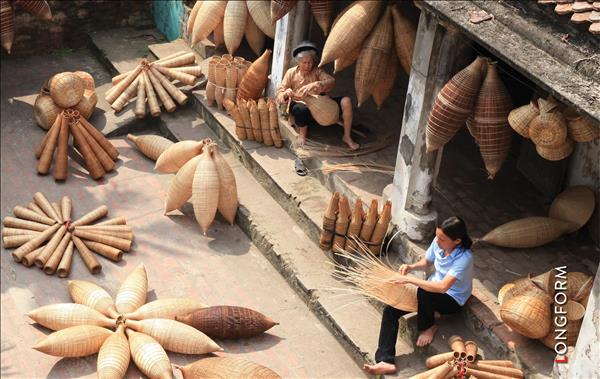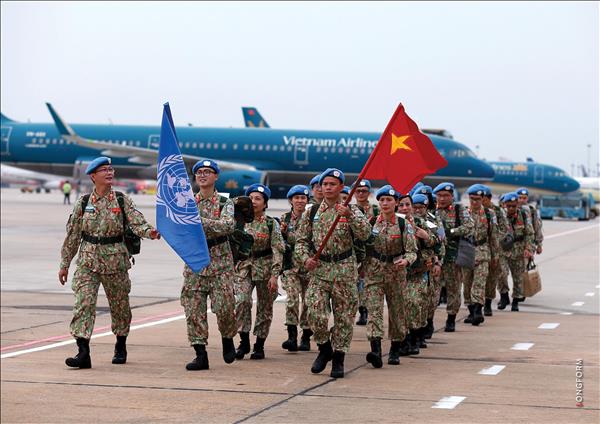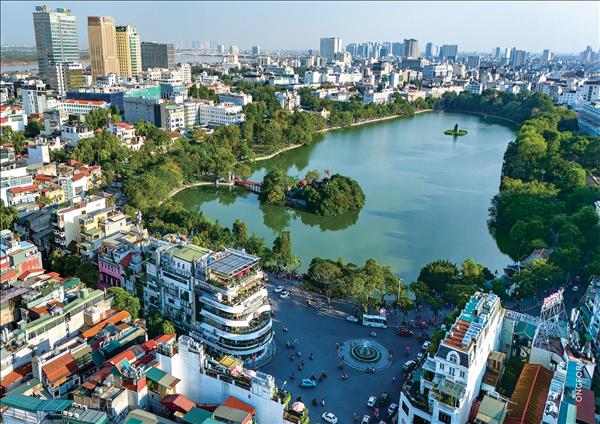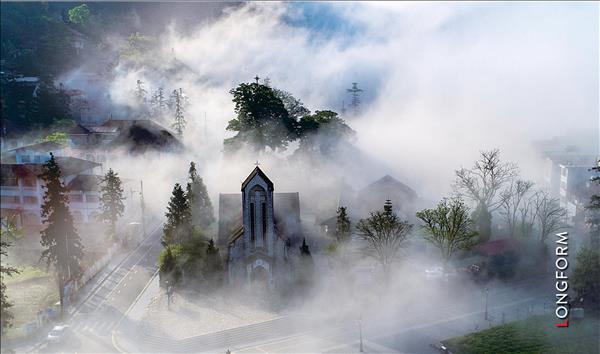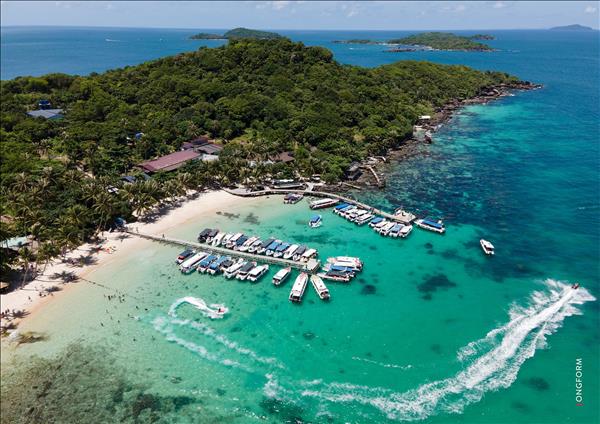In previous years, e-customs was applied in Vietnam with good impressions on the enterprise community for its promptness, convenience and efficiency. However, the application stopped short at experiments in a handful of units, thus failing to create vigorous improvement throughout Vietnam customs. Recently, under the Government’s resolute direction, Vietnam customs has made strong improvements in the reform of administrative procedures in order to better the business environment and heighten national competitiveness.
Such improvement has resulted in initial breakthrough successes in the implementation of the General Department of Customs’ Reform Strategy of Modernisation through 2020, already approved by Prime Minister Nguyen Tan Dung, especially with the successful synchronous application of the Vietnam Automated Cargo and Port Consolidated System and Vietnam Customs Intelligence Information System (VNACCS/VCIS) to all customs departments and sub-departments nationwide.
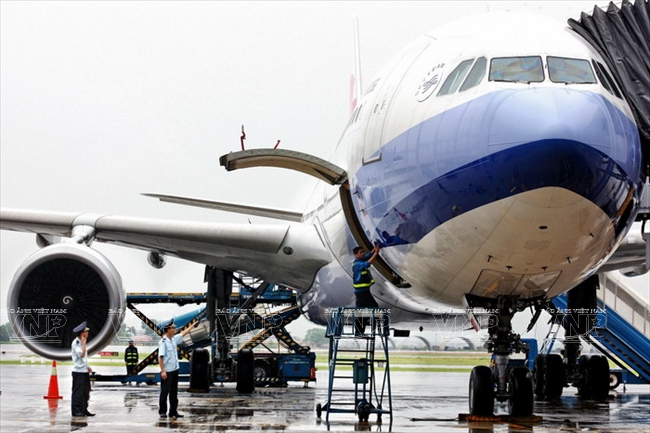 Supervising the loading of cargo at Terminal 2, Noi Bai International Airport. Photo: Tat Son/VNP 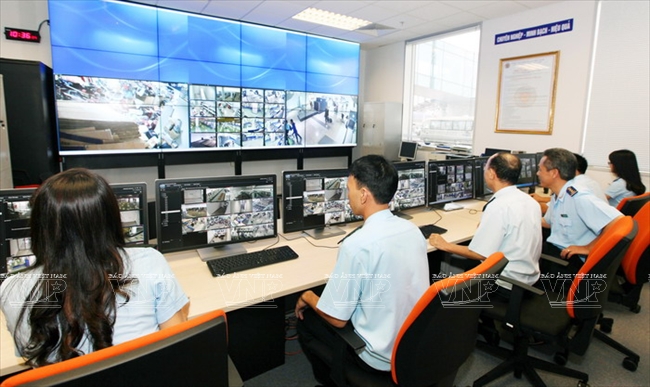 Monitoring room of the Terminal 2’s Customs Department - Noi Bai International Airport. Photo: Tat Son/VNP 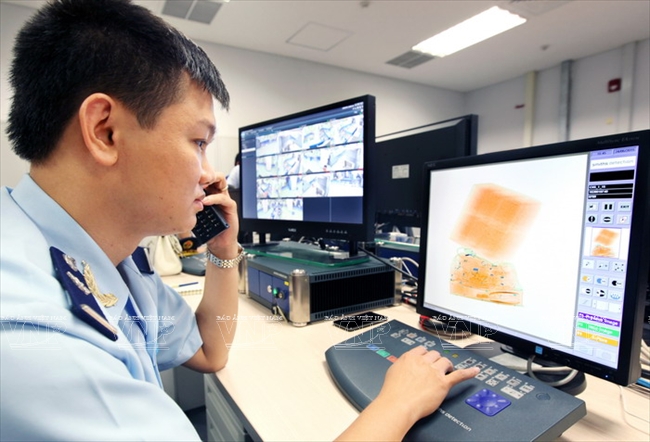 Customs officer of the Anti-smuggling Department at Terminal 2 - Noi Bai International Airport, supervises goods through an online Xray scanner. Photo: Tat Son/VNP 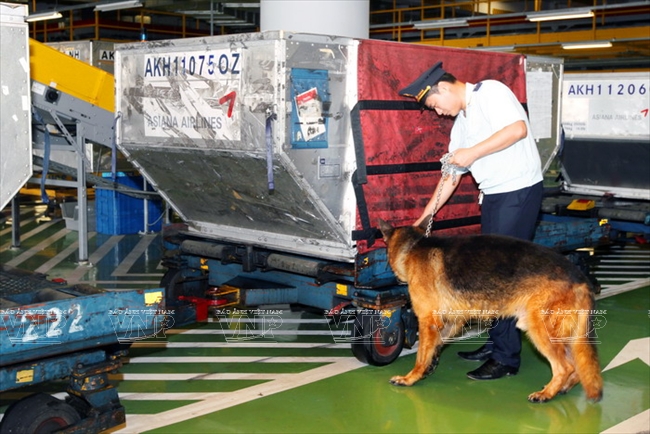 Using dogs for drug patrol at storage areas. Photo: Tat Son/VNP 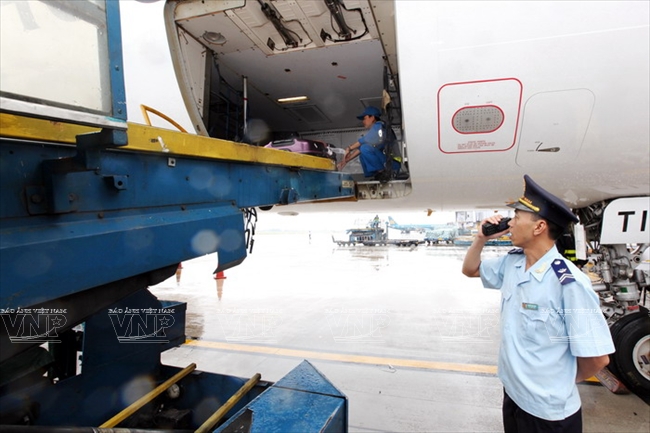 Nguyen Van Ngoc, officer of the supervising team at a platform area of the Terminal 2’s Customs Department, is on duty. Photo: Tat Son/VNP |
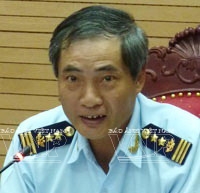
Nguyen Manh Tung
"The VNACCS/VCIS application has helped reduce time at all basic stages in the process of carrying out customs procedures, particularly the stage of customs declarations and handling of written declarations."Director of the Information Technology and Statistics Department of the General Department of Customs. |
According to Nguyen Manh Tung, Director of the Information Technology and Statistics Department of the General Department of Customs, the VNACCS/VCIS application has helped reduce time at all basic stages in the process of carrying out customs procedures, particularly the stage of customs declarations and handling of written declarations. At present the declaration reception, handling and reply only take 1- 3 seconds. For the green cargo gate (exemption from paper examinations and actual inspection) the customs clearance time is recorded at only 1- 3 seconds. The time to carry out procedures for customs supervision of exported and imported goods only lasts several minutes instead of several hours as before, markedly reducing the congestion of export and import goods at ports. For tax payments, the General Department of Customs has coordinated with 17 commercial banks and an on-line connection with the State Treasury for E- payment via banks. As a result, within 15 minutes after an enterprise makes payment at the State Treasury, the money payment information will appear at the Vietnam Customs’ portal and the liquidation is immediately effected, tax debts subtracted and customs clearance carried out for goods. The striking pluses of the VNACCS/VCIS systems, which are greatly appreciated by the enterprise community, are because they make tax collection and payment faster and more transparent, minimising inaccurate tax impositions and shortening the customs clearance time for enterprises.
Also worthy of note is that, the VNACCS/VCIS application has created a bridge, boosting the involvement of concerned ministries and sectors in order to minimise the time to carry out export and import procedures for enterprises, heightening high competitiveness for Vietnamese enterprises while creating a motive for quicker and quicker reform of administrative procedures by state management bodies towards an e-government.

The Cai Lan Port’s Customs Department is the first unit of the Quang Ninh Province’s Customs
to officially implement VNACCS/VCIS. Photo: Tat Son/VNP
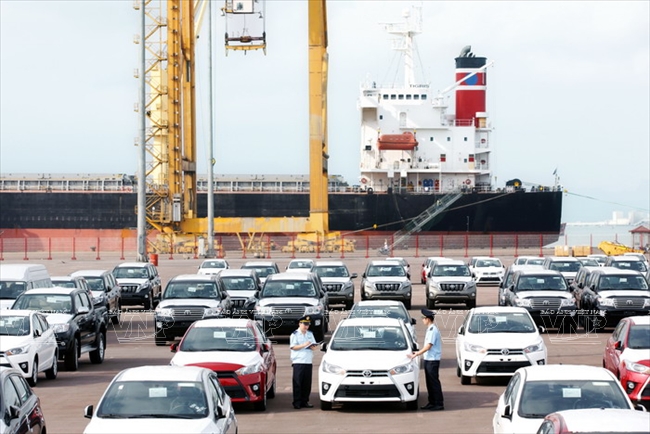
Checking imported cars at Cai Lan Port. Photo: Tat Son/VNP
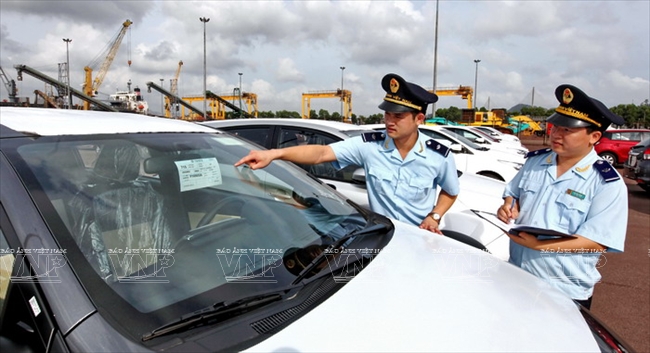
Parking supervising officers check the parameters of each type of imported car at Cai Lan Port. Photo: Tat Son/VNP
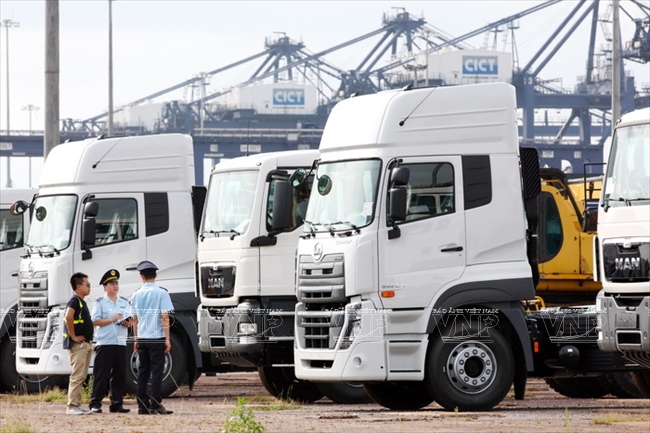
Heavy trucks are imported to Vietnam at Cai Lan Port. Photo: Tat Son/VNP
| According to statistics of the General Department of Customs’ Information Technology and Statistics Department, by March 31, 2015, 53,200 enterprises had carried out the E- customs procedures with a quantity of 6.1 million declaration forms, and the export turnover reached 244 billion dollars. |
Thanks to the VNACCS/VCIS systems, the customs clearance time for Vietnamese export and import goods will reach the average level of the 6 best ASEAN countries (ASEAN-6, including Singapore, Malaysia, Thailand, the Philippines, Indonesia and Brunei) by the end of 2015 when the ASEAN Economic Community (AEC) officially enters into operation and will reach the average level of ASEAN- 4 group (including Singapore, Malaysia, Thailand and the Philippines), with less than 10 days for exported goods and under 12 days for imported goods in 2016.
Reality from units
At all cargo supervision and export and import goods customs clearance zones in the Customs Department and Customs Sub-Departments at Noi Bai International Airport (Hanoi), the deep-water sea port of Cai Lan (Quang Ninh), the Mong Cai border-gate (Quang Ninh) and Yen Phong Industrial Park (Bac Ninh), the scenes of cumbersome piles of dossiers and books, noisy crowds of people waiting for their turns were no longer seen. They have now been replaced by scenes of calm and orderliness in a professional and modern working atmosphere. What is more impressive about these units is that a system of computers and modern equipment for container screening, supervision cameras and GPS seals have greatly helped shorten the customs declaration time for enterprises.
At Terminal 2 of Noi Bai International Airport, the most modern terminal in Vietnam to date, which has just been put into operation, the effect of the VNACCS/VCIS systems is manifested in the number of flights, the number of declaration forms cleared and even in fighting smuggling.
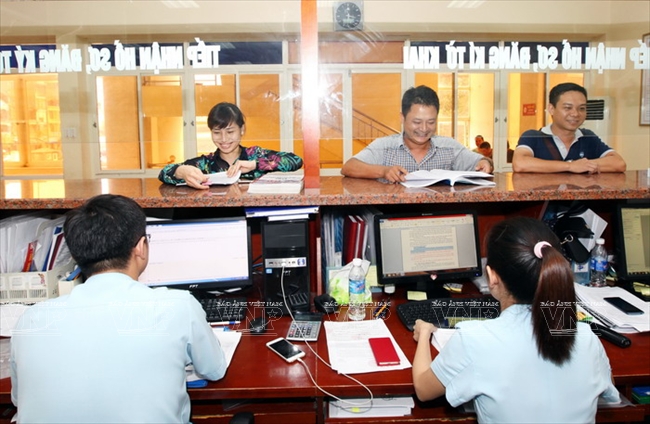 The Customs Department of Mong Cai Border Gate smoothly resolve procedures for businesses through VNACCS/VCIS. Photo: Tat Son/VNP  An advanced X-ray scanner checks entering and existing at Mong Cai Border Gate, Quang Ninh Province. Photo: Tat Son/VNP 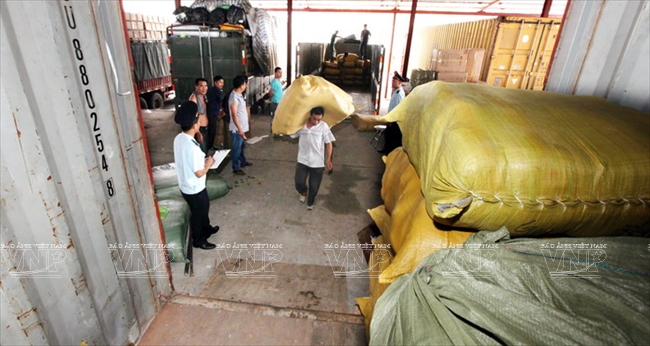 Checking goods at an area, 1km from Mong Cai Border Gate. Photo: Tat Son/VNP |
| So far, the General Department of Customs has furnished 11 free-of-charge container screening systems at concentrated cargo inspection locations in key areas with large cargo flows under six Customs Departments. In 2015, it additionally put to use 97 luggage and cargo screening machines, 19 camera systems at 9 provincial/municipal Customs Departments. 5 more container screening machines will be equipped soon. |
Meanwhile at the Customs Sub-Department at Cai Lan Port, Quang Ninh Province, after nearly one month of operation, 60 enterprises joined the E-customs procedures in the VNACCS/VCIS systems. The percentage of declaration forms carried out through E-customs procedures reached 100% (408/408); the E-customs procedures turnover reached 130,925,744 dollars (representing 100% of the export and import turnover of the same type). So far, 105 out of 115 enterprises have used digital signatures to carry out the E-customs procedures (representing 91.3%).
The efficiency of the VNACCS/VCIS systems can also be clearly seen at Mong Cai Border-gate Customs Sub-Department (Quang Ninh Province), which carried out E-customs procedures for 1,907 declaration forms with the e-turnover of 750 million dollars. The number of e-declaration forms carried out in 2014 by Mong Cai customs office reached 5,825 sets with the turnover of 941.1 million dollars (representing 100% of the total declaration forms and 100% of the set turnover).
At the customs team in Yen Phong Industrial Zone (Bac Ninh), which is used largely by foreign “super-companies” and “super-investors”, the VNACCS/ VCIS systems have operated effectively with very positive results. Here, all customs processes have been standardised and modernised as in such developed countries as the United States, Germany and Japan. Bui Ngoc Dung, Deputy Head of Bac Ninh Customs Sub-Department, revealed an average of 500 declaration forms of enterprises were approved and cleared daily by the Customs Team. On peak days, the number reached 1,500 declaration forms.

An afficer of the Yen Phong Industrial Zone’s Customs Department, Bac Ninh Province checks and seals off goods.
Photo: Tat Son/VNP
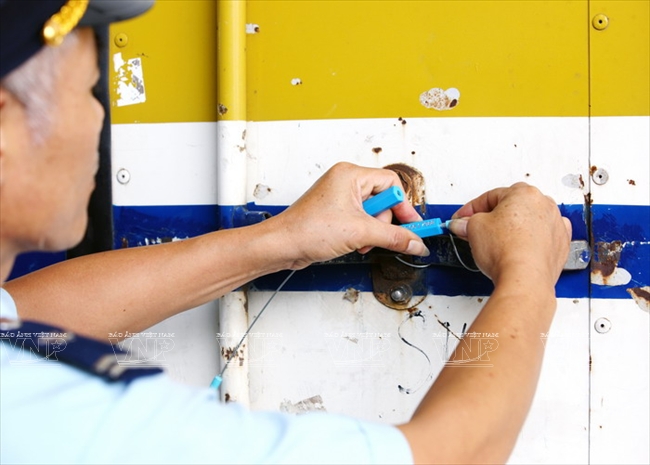
Sealing a cargo vehicle. Photo: Tat Son/VNP
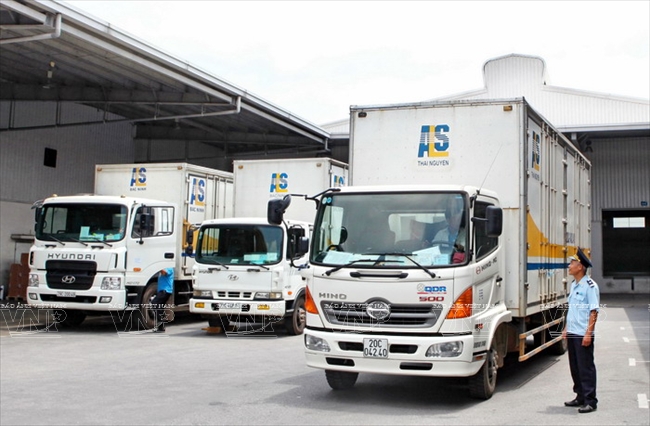
Checking cargo vehicles for the last time before they leave. Photo: Tat Son/VNP
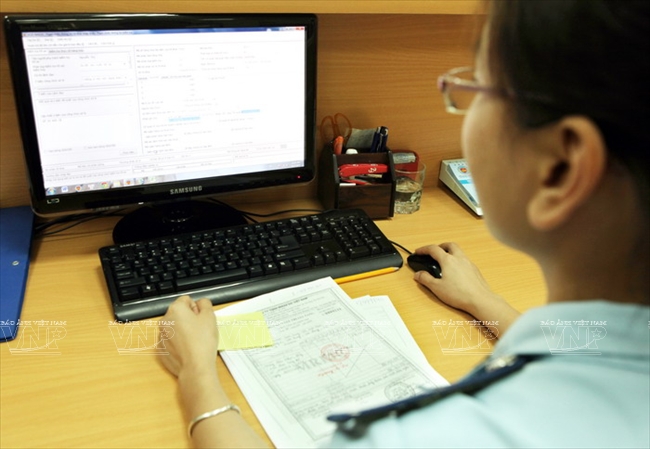
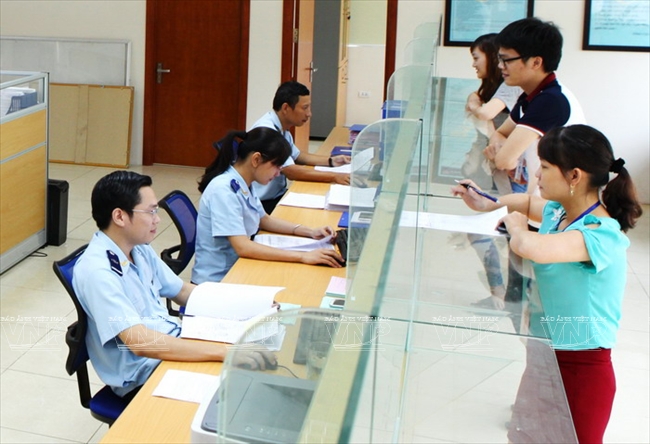
VNACCS/VCIS helps simplifying customs procedures. Photo: Tat Son/VNP
The successful application of VNACCS/VCIS systems has created breakthroughs in the road map of administrative reform, aiming to modernise Vietnam Customs before the threshold of integration. It has ushered in potential opportunities for the enterprise community in particular and the entire Vietnamese economy in general, particularly when the ASEAN Economic Community (AEC) is going to come true on December 31, 2015.
Story: Thao Vy - Photos: Tat Son
phamtrangnhung

